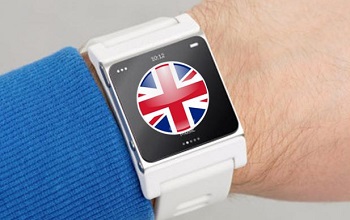Whether you’re headed to Mardi Gras or another festival or attraction, wearables can help find children in a crowd.
Although wearable technology has been primarily focused on issues such as health and fitness tracking as well as call and text alerts, it is now being speculated that these devices might also become very popular among parents who want to make sure their kids can find their way back again if they should wander off in a crowd.
This is good news for parents who will be bringing little ones to the Mardi Gras celebrations, this year.
That said, wearable technology’s benefit for helping scared and lost children to find their parents, once again, is hardly limited to the Carnival season. As events start to become more common over the spring and summer, the need to keep track of kids and to give them a way to be safely returned to parents will only become more important. In this way, parents will not only be able to keep track of event locations, concert schedules, parade routes, and festival maps, but they’ll also bring young ones back to parents again.
This use for wearable technology will be important for helping families to keep calm and to stick together.
 While many events – including Mardi Gras – are designed to be exceptionally family friendly, when such a large number of people are all milling about in the same location, it takes only a split second before family members can become separated from each other. Moreover, it takes only a few feet of distance before another person can become impossible to see from among all the rest of the people in the crowd, particularly with so many other distracting, colorful and exciting things going on all around. Parents are now using wearables to make it possible for little ones to send an alert to the smartphones of their parents when they’re lost or scared, without having to find a phone of their own.
While many events – including Mardi Gras – are designed to be exceptionally family friendly, when such a large number of people are all milling about in the same location, it takes only a split second before family members can become separated from each other. Moreover, it takes only a few feet of distance before another person can become impossible to see from among all the rest of the people in the crowd, particularly with so many other distracting, colorful and exciting things going on all around. Parents are now using wearables to make it possible for little ones to send an alert to the smartphones of their parents when they’re lost or scared, without having to find a phone of their own.
This is being accomplished through gadgets such as the GizmoPal 2, which is made by LG and that runs on the Verizon network. It employs GPS and wearable technology that will allow children press a button to access two-way communication with their parents.
When compared to 2014, there was double the number of wearables purchased in the U.K. in 2015.
According to the data from the Mintel international market research firm, the number of wearable technology devices that were purchased in 2015 in the United Kingdom were about double the figure from 2014.
The company estimated that over a period of 12 months, people in the U.K. purchased 3 million wearables.
The wearable technology devices that were considered in these figures were smartwatches and fitness trackers. The total includes the devices purchased during the twelve months that followed September 2014. It’s important to note that, despite the tremendous growth that was recorded through these figures, they didn’t take into account the three months that included the holiday shopping season in 2015. Still, that period of one year still recorded a growth of 118 percent when compared to the twelve months previous to it. These figures align relatively accurately with the predictions that were made by IDC, last June.
Fitness trackers remain the most popular sub-category within the definition of wearable technology gadgets.
 IDC pointed out that the leader among fitness tracker wearables is, by far, Fitbit. It, therefore, remains the leader in wearable tech as a whole. The share fitness trackers held of the wearables market was currently estimated to be 63 percent, after having shipped 1.9 million devices last year. Comparatively, there have been 1.1 million smartwatches shipped in the United Kingdom, representing 37 percent of the market.
IDC pointed out that the leader among fitness tracker wearables is, by far, Fitbit. It, therefore, remains the leader in wearable tech as a whole. The share fitness trackers held of the wearables market was currently estimated to be 63 percent, after having shipped 1.9 million devices last year. Comparatively, there have been 1.1 million smartwatches shipped in the United Kingdom, representing 37 percent of the market.
When comparing these figures to the previous twelve month period, fitness trackers have seen their share shrinking. The year before the most recent results showed that fitness trackers made up 91 percent of all wearable tech sales. It was during that period that the Apple Watch was released into the U.K. market (April 2015), and a broad spectrum of different Android smartwatches also hit the shelves, such as the Moto 360 and Samsung Gear G2.
These provided consumers with more options outside of fitness trackers, allowing them to choose from among a larger range of wearable technology offerings. With more options, it’s easy to understand why fitness trackers lost some of their hold on the market as a whole in the United Kingdom.
 While many events – including Mardi Gras – are designed to be exceptionally family friendly, when such a large number of people are all milling about in the same location, it takes only a split second before family members can become separated from each other. Moreover, it takes only a few feet of distance before another person can become impossible to see from among all the rest of the people in the crowd, particularly with so many other distracting, colorful and exciting things going on all around. Parents are now using wearables to make it possible for little ones to send an alert to the smartphones of their parents when they’re lost or scared, without having to find a phone of their own.
While many events – including Mardi Gras – are designed to be exceptionally family friendly, when such a large number of people are all milling about in the same location, it takes only a split second before family members can become separated from each other. Moreover, it takes only a few feet of distance before another person can become impossible to see from among all the rest of the people in the crowd, particularly with so many other distracting, colorful and exciting things going on all around. Parents are now using wearables to make it possible for little ones to send an alert to the smartphones of their parents when they’re lost or scared, without having to find a phone of their own.
 IDC pointed out that the leader among fitness tracker wearables is, by far, Fitbit. It, therefore, remains the leader in wearable tech as a whole. The share fitness trackers held of the wearables market was currently estimated to be 63 percent, after having shipped 1.9 million devices last year. Comparatively, there have been 1.1 million smartwatches shipped in the United Kingdom, representing 37 percent of the market.
IDC pointed out that the leader among fitness tracker wearables is, by far, Fitbit. It, therefore, remains the leader in wearable tech as a whole. The share fitness trackers held of the wearables market was currently estimated to be 63 percent, after having shipped 1.9 million devices last year. Comparatively, there have been 1.1 million smartwatches shipped in the United Kingdom, representing 37 percent of the market.